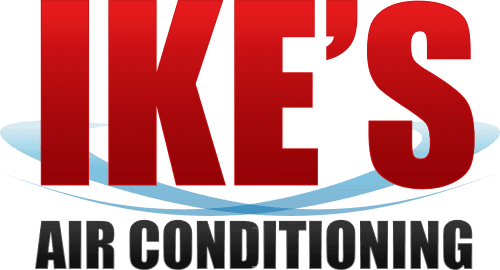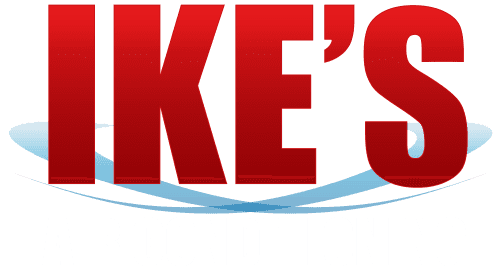In winter, a reliable heating system is not just about comfort; it's necessary. A well-functioning heating system becomes crucial for maintaining a warm and habitable indoor environment as temperatures plummet. The biting cold can go beyond discomfort and impact health and daily life.
Recognizing common heating issues is a proactive step towards ensuring that the warmth of your home is not compromised when you need it the most. By understanding these issues, you can be better equipped to take initial troubleshooting steps. In some cases, professional assistance may be necessary for an effective resolution.
When it comes to a reliable heating system in San Antonio, IKE'S Air Conditioning is here to help. Contact us at (210) 405-6116 today.
Furnace Maintenance Tips
Regular maintenance is the key to extending the lifespan of your furnace and helps it operate efficiently. The wear and tear naturally occurring with consistent use can be mitigated through proactive maintenance. Addressing potential issues early on can prevent unexpected breakdowns and reduce the risk of major malfunctions. Routine maintenance involves the timely replacement of parts that may be showing signs of wear due to usage, safeguarding the overall functionality of the furnace.
While homeowner maintenance is valuable, there's no substitute for a professional touch. Scheduling an annual inspection by a technician is a proactive measure that can save time and money.
Professional inspections go beyond routine maintenance; they delve into intricate components, keeping everything in optimal condition. This thorough assessment can catch potential problems before they escalate into costly repairs or necessitate a complete system replacement.
Thermostat Troubleshooting
Understanding the common issues associated with thermostats is crucial for maintaining a consistently comfortable indoor environment.
Below are some common issues that can impact your thermostat’s performance:
- Grime: Dust accumulation within the thermostat can disrupt its functionality, causing inaccurate temperature readings.
- Level: An unlevel thermostat might not register the correct ambient temperature, leading to inefficient heating.
- Age: With outdated technology, older thermostats may struggle to regulate temperatures effectively.
- Power source: Low batteries are a frequent culprit in thermostat malfunctions, emphasizing the need for regular checks.
- Installation: Improper installation can result in miscommunication between the thermostat and the heating system, leading to operational issues.
Upgrading to a programmable thermostat brings many benefits above basic temperature control. The primary advantage lies in setting specific temperature schedules and optimizing energy usage. You can program the thermostat to lower temperatures when the house is unoccupied or during sleeping hours, contributing to energy savings. The convenience of remote programming allows users to adjust settings from anywhere, promoting an efficient and comfortable home environment.
Insulation and Heat Loss
Think of insulation as a thermal shield for your home. When it's insufficient, heat easily escapes through walls, ceilings, and floors. The primary function of insulation is to slow the flow of heat, creating a buffer between the interior and exterior environments. This barrier is compromised without proper insulation, allowing precious warmth to dissipate, leading to increased energy consumption and higher heating costs.
Improving insulation strategically in key areas of a home is a practical and effective approach to curbing heat loss and, consequently, reducing heating and cooling costs. This could involve reinforcing insulation in attics, walls, and floors. Enhancing the thermal resistance in these critical zones creates a more efficient and stable indoor climate.
Air Filter Replacement
The significance of clean air filters in the context of efficient heating cannot be overstated. When air filters become dirty or clogged, they strain your heating unit. Think of air filters as the lungs of your HVAC system—they allow the smooth flow of air. When they are obstructed, the heating system must exert more effort, consuming additional energy to maintain the desired temperature.
Regularly replacing air filters is a simple yet impactful practice that helps your heating system operate optimally, promoting energy efficiency and preventing unnecessary strain on the unit. Replacing air filters at least every couple of months is advisable to maintain a consistently efficient heating system. This frequency may vary based on factors such as the type of filter, the level of household dust, and whether pets are in the home. Regular replacement keeps the air flowing into the heating system unimpeded, preserving its efficiency and contributing to a healthier indoor air quality.
Identifying and Addressing Heat Leaks
Heat leaks are often elusive culprits behind energy inefficiency in homes. Common sources include windows and doors that aren't adequately sealed, pipe vents, electrical outlets, and uninsulated or poorly sealed air ducts. Recognizing these potential heat loss areas is the first step in fortifying your home against energy wastage.
Taking a proactive stance, homeowners can employ simple do-it-yourself methods to identify and seal air leaks. Weather stripping or caulking around windows and doors is an effective solution to eliminate drafts. Sealing electrical outlets with socket sealers prevents heat from escaping through gaps. Aluminum tape is a reliable choice for ducts, directing heated air where intended and minimizing losses. These DIY measures enhance energy efficiency and create a more comfortable living space.
While DIY methods can address common leaks, there are instances where professional assistance becomes essential. If a leak proves particularly troublesome or if there's uncertainty about its source, it's time to consider comprehensive inspections by professionals. These individuals possess the tools and knowledge to conduct thorough assessments, identify hidden leaks, and offer targeted solutions.
Creating a Cozy Winter with Reliable Heating
Several key preventative measures emerge in safeguarding your home against the chill of winter. Regular furnace maintenance, thermostat troubleshooting, adequate insulation, timely air filter replacement, and vigilance against heat leaks are the cornerstones of a well-functioning heating system. Addressing these aspects can avoid common winter heating problems and contribute to energy efficiency and cost savings.
For comprehensive heater service in San Antonio, Texas, consider entrusting your heating needs to the professionals at IKE'S Air Conditioning. Call (210) 405-6116 or contact us online.

